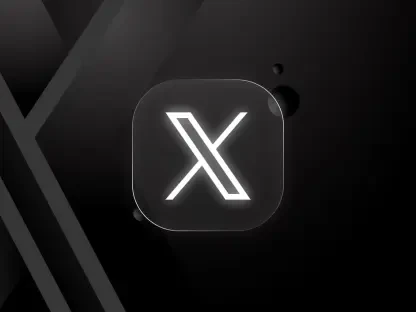As we approach 2024, the landscape of video marketing is set to undergo significant transformations. Brands are increasingly leveraging new trends to enhance engagement, authenticity, and visibility in a competitive market. This article explores the top seven video marketing trends that are expected to shape the marketing landscape in 2024, providing insights into how they can help brands expand their reach and engage more customers.
User-Generated Content (UGC)
Definition and Benefits of UGC
User-generated content (UGC) involves brands encouraging their existing customers to create and share their own content to promote a product or service. This trend leverages the trust consumers place in real-user testimonials over professional marketing campaigns. UGC enhances authenticity and can significantly influence potential buyers in their decision-making process. The growing preference for real and relatable content among audiences has positioned UGC as a powerful tool for brands to build connections and credibility.
As consumers increasingly seek genuine experiences and peer reviews, UGC stands out as an invaluable asset in the marketing arsenal. It not only humanizes a brand but also empowers customers to become brand advocates, showcasing their personal stories and experiences. The authenticity derived from UGC cannot be underestimated, with studies indicating that UGC is more likely to be trusted and result in higher engagement compared to traditional advertisements.
Successful Examples and Execution Strategies
Apple’s “Shot on iPhone” campaign and GoPro’s use of customer-created content in advertisements serve as successful cases of UGC. Brands may incentivize users by offering discounts or other rewards for creating and sharing content related to their products on social media. This approach not only boosts engagement but also fosters a sense of community among customers. The involvement of loyal customers in content creation creates a snowball effect, where shared content gains traction and reaches a wider audience organically.
An essential aspect of executing successful UGC campaigns involves creating platforms and opportunities for customers to share their stories easily. Brands can host contests or challenges that encourage content creation, subsequently sharing these contributions on official channels. Additionally, it’s vital to acknowledge and reward contributors, as this not only enhances participation but also deepens customer loyalty. Establishing clear guidelines and themes can guide user contributions while maintaining brand consistency and messaging.
Influencer Marketing
Definition and Key Benefits
Influencer marketing involves partnerships between brands and popular social media figures or thought leaders to promote products or services. Similar to UGC, influencer marketing fosters consumer trust and can introduce brands to wider, untapped audiences. Influencers leverage their established credibility and follower base to endorse products in a relatable and trustworthy manner, bridging the gap between brands and their target demographic.
Collaborating with influencers allows brands to tap into niche communities and gain access to potential customers who might otherwise remain unaware of their offerings. The personal rapport and relatability that influencers share with their followers can significantly impact purchasing decisions. Additionally, influencers often bring a fresh and creative perspective to brand promotions, making the marketing content more engaging and authentic.
Notable Campaigns and Implementation
NBC partnered with Snoop Dogg to boost its 2024 Summer Olympics coverage and engagement through social media. This collaboration highlights the potential of influencer marketing to reach diverse audiences. Brands should carefully select influencers whose values align with their own to ensure authenticity and effectiveness in their campaigns. The synergy between the influencer’s personality and the brand’s ethos is crucial in delivering a genuine and resonant message.
When implementing influencer marketing campaigns, brands must conduct thorough research to identify influencers whose audience demographics match their target market. This alignment ensures that promotional efforts are directed towards the most relevant prospects. Compensating influencers can be approached through direct payment, product gifting, or long-term partnership deals. Maintaining clear communication and providing creative freedom to influencers can result in impactful and memorable campaigns that resonate deeply with their followers.
Short-Form Video
Rise of Short-Form Video Content
Short-form videos are brief, engaging clips that typically last from a few seconds up to two minutes. Platforms like TikTok, Instagram Reels, and YouTube Shorts are popular for this content type. These videos capture attention quickly, spread virally, and are easy to produce, making them ideal for the fast-paced nature of social media consumption. The rise of these platforms has ushered in a new era of bite-sized content where creativity and novelty reign supreme.
The shift towards short-form videos reflects changing audience preferences for concise, impactful content that can be consumed on the go. This format enables brands to deliver key messages swiftly and effectively. Due to their shareability, short-form videos have a high potential to go viral, amplifying brand visibility and engagement. The accessibility and versatility of short-form content allow marketers to experiment with different themes, trends, and formats to keep their audience engaged.
Creative Approaches and Viral Potential
Various brands employ trending dances, sounds, and memes to create viral content. The key to success with short-form videos lies in creativity and the ability to respond in real-time to trends. Brands should focus on producing content that is not only entertaining but also aligns with their overall marketing strategy. Creating content that resonates with current cultural moments or leverages popular trends can lead to exponential growth in views and engagement.
To maximize the impact of short-form video content, brands should invest in understanding platform-specific algorithms and audience behaviors. By tailoring content to the preferences and habits of the platform’s user base, marketers can significantly improve their chances of reaching a wider audience. Additionally, integrating call-to-action elements within these videos can drive further engagement and conversions, making short-form videos a highly effective component of the marketing mix.
AI Automation
Simplifying Video Production with AI
AI tools simplify the video production process by automating tasks such as scriptwriting, voiceover addition, storyboard creation, and image design. AI reduces the complexity and resource intensity of video production, making high-quality video content accessible even to those without professional skills. This democratization of video production allows brands of all sizes to produce professional-grade content without the need for extensive resources or technical expertise.
The integration of AI in video marketing has streamlined workflows and enhanced efficiency, enabling marketers to meet the growing demand for video content. By automating repetitive and time-consuming tasks, AI allows marketers to focus their efforts on strategic planning and creative innovation. This shift towards automation is crucial for maintaining consistency and quality in video marketing campaigns, allowing brands to produce content at scale without compromising on excellence.
Tools and Benefits of AI in Marketing
Tools like Google’s generative AI Vids assist marketers in efficiently producing polished video content, democratizing video production. Brands can utilize these AI tools to streamline and enhance their video production capabilities, ensuring consistency and quality in their output. This technological advancement allows marketers to focus more on creative aspects and strategic planning. The use of AI also opens doors for personalized content creation, where videos can be tailored to individual preferences and behaviors, enhancing audience engagement.
Incorporating AI-powered analytics can further refine video marketing strategies by providing insights into audience preferences, performance metrics, and areas for improvement. This data-driven approach empowers marketers to make informed decisions, optimize content for better results, and deliver more relevant and engaging experiences to their audience. As AI continues to evolve, its potential applications in video marketing will likely expand, offering even more innovative solutions for content creation and distribution.
Video Compliance
Importance of Video Compliance
Video compliance involves ensuring that video content adheres to legal, ethical, and branding guidelines before publication. Effective compliance prevents the release of potentially harmful or offensive content that could damage a brand’s reputation. Without robust approval processes, brands risk publishing non-compliant videos that could include copyrighted material or content that does not align with company policies. The importance of video compliance has increased as regulatory scrutiny and consumer expectations for ethical marketing practices grow.
Adhering to video compliance standards not only protects brands from legal repercussions but also helps maintain trust and credibility with their audience. In an age where transparency and accountability are paramount, ensuring that all video content aligns with regulatory and ethical guidelines is crucial for long-term success. Proactive compliance measures reflect a brand’s commitment to responsible marketing and can positively influence public perception.
Strategies for Ensuring Compliance
Implementing AI-powered or manual approval processes to screen content for compliance risks is crucial in maintaining control over video marketing materials. Brands should establish clear guidelines and training for their teams to ensure that all content meets the necessary standards before it goes live. This involves setting up a robust content review system that includes legal, ethical, and branding assessments to preemptively address any potential issues.
Transparency and communication within teams play a significant role in upholding video compliance standards. Creating a centralized compliance framework and leveraging technology to streamline approval workflows can enhance efficiency and accuracy. Additionally, fostering a culture of awareness and responsibility among employees can contribute to more vigilant and conscientious content creation. By prioritizing video compliance, brands can safeguard their reputation and build lasting trust with their audience.
Livestreaming
Engaging Audiences with Livestreaming
Livestreaming involves broadcasting live video content over the internet. This trend fosters immediate, real-time interaction with audiences, builds community, and can enhance customer engagement and sales. Livestreaming formats include product launches, unboxing videos, and live Q&A sessions, which allow for direct, unscripted interactions with viewers. The spontaneous and interactive nature of livestreaming creates a sense of authenticity and immediacy that is highly valued by audiences.
Livestreaming has become an essential tool for brands looking to create immersive and engaging experiences. The ability to connect with viewers in real-time allows for dynamic conversations, instant feedback, and a deeper level of engagement. This format also provides opportunities for brands to showcase their personalities, humanize their offerings, and build stronger connections with their audience. The rapid growth of livestreaming platforms has made this trend more accessible and versatile, enabling brands to experiment with various formats and strategies.
Platforms and Best Practices
Brands can leverage platforms like IBM Video Streaming and Facebook Live to conduct live events, engaging audiences directly and collecting instant feedback. To maximize the impact of livestreaming, brands should plan their content carefully, promote the event in advance, and interact with viewers during the broadcast to create a dynamic and engaging experience. Successful livestreaming involves balancing preparation and spontaneity to deliver polished yet authentic content.
Promoting the livestream event through social media, email marketing, and other channels is essential for driving attendance and generating buzz. Encouraging audience participation through live polls, Q&A sessions, and interactive segments can enhance engagement and create a sense of community. Monitoring and analyzing viewer reactions and feedback during and after the broadcast can provide valuable insights for optimizing future livestreaming efforts.
Hybrid and Virtual Events
Definition and Benefits of Hybrid Events
Hybrid events combine in-person elements with virtual components, enabling broader participation. These events maximize reach by integrating live-streamed content for remote attendees, reducing costs and logistical challenges compared to fully physical events. Post-pandemic, there is a shift towards selective live-streaming of event portions rather than fully hybrid experiences due to the high resource demands. Hybrid events offer the flexibility to cater to diverse audience preferences, allowing for both physical and virtual engagement.
The evolution of hybrid events has transformed the way brands approach event planning and execution. By blending in-person and online experiences, brands can create more inclusive and adaptable events that cater to a wider audience. The ability to reach remote participants without the constraints of physical location has opened new avenues for engagement, networking, and knowledge sharing. Additionally, hybrid events can provide valuable data and insights into attendee behavior, preferences, and interactions.
Execution and Trends in Hybrid Events
Brands might choose to live-stream key segments of in-person events or host entirely virtual events like webinars, which facilitate global participation at lower costs. The execution of hybrid events involves meticulous planning to ensure a seamless integration of physical and virtual elements. Investing in robust technology infrastructure and user-friendly platforms is essential for delivering a high-quality experience to both in-person and virtual attendees.
Emerging trends in hybrid events include the use of augmented reality (AR) and virtual reality (VR) to create immersive and interactive experiences. These technologies can enhance the attendee experience by providing rich, engaging, and memorable interactions. Additionally, incorporating networking and collaboration tools within virtual platforms can foster meaningful connections and community-building among participants. As hybrid events continue to evolve, brands that embrace innovation and adaptability will be well-positioned to create impactful and successful events that resonate with their audience.
Summary and Main Findings
The key findings from the article indicate that marketers must stay abreast of current trends to effectively utilize video marketing strategies in 2024. Key trends include UGC, influencer marketing, short-form videos, AI automation, video compliance, and livestreaming. While each trend has its unique execution strategies and benefits, they collectively aim to increase authenticity, engagement, and reach, ensuring that brands resonate more deeply with their audiences.
Marketers are encouraged to adopt these trends thoughtfully, integrating them into their broader marketing strategy to create cohesive and impactful campaigns. The fusion of social media, AI, and the digital workplace presents unparalleled opportunities for marketers to innovate and differentiate their brands in a saturated market. By embracing these emerging trends, brands can effectively capture and retain audience attention, build trust, and drive meaningful engagement.
Conclusion
As we look ahead to 2024, video marketing is set to experience some major changes. Brands are increasingly tapping into fresh trends to boost engagement, authenticity, and visibility in a highly competitive market. This article delves into the seven top video marketing trends that are likely to define the marketing landscape in 2024. It not only identifies these trends but also provides insights on how they can help brands extend their reach and connect with more customers.
These trends cover a broad spectrum from short-form video content that caters to the diminishing attention spans of modern audiences to live streaming that fosters real-time interaction and authenticity. The rise of user-generated content is also notable, as it builds trust and relatability. Additionally, leveraging advanced analytics and personalized video experiences will allow brands to tailor their content more effectively to meet the diverse needs of their audiences.
Furthermore, the evolution of augmented reality (AR) and virtual reality (VR) in video marketing promises to deliver immersive experiences like never before. Another significant trend is the increased use of shoppable videos, making the shopping experience seamless and more engaging for consumers. Lastly, sustainability-centered storytelling will be pivotal as consumers increasingly favor brands that demonstrate social responsibility.
In summary, understanding and implementing these emerging video marketing trends can significantly help brands stay ahead in the market, ensuring deeper customer connections and better engagement.









